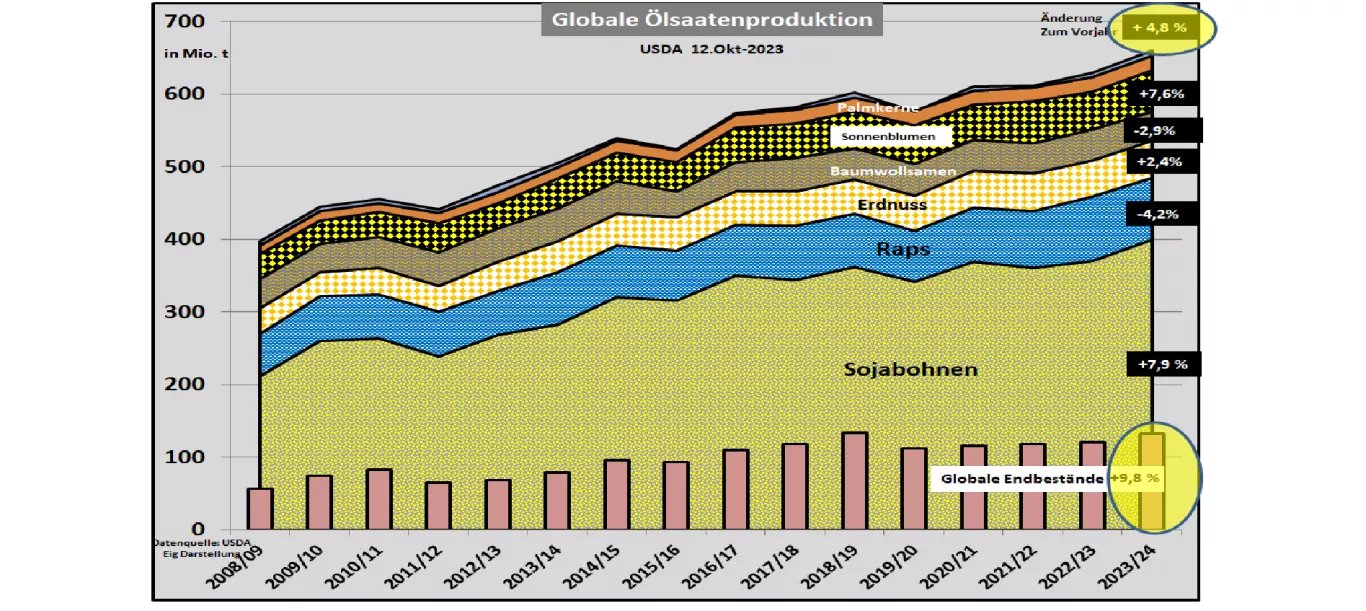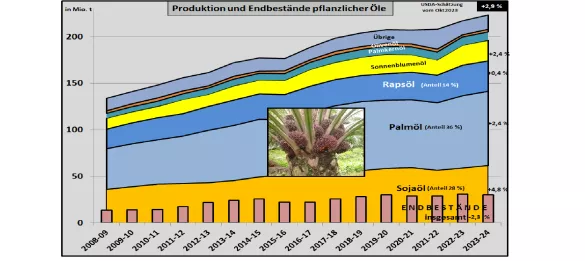Oct. 2023: USDA corrects previous month's oilseed estimate downwards, but above previous year In its monthly estimate of the global oilseed market, the USDA reduces its forecasts for individual oilseed crops by a total of 1.5 million t to 659 million t. The biggest decline compared to the previous month is in soybean production at almost -2 million t. noted. Smaller downward revisions are made for rapeseed and cottonseed. On the other hand, the result for sunflowers is increased compared to the previous month. There was an overall increase of +4.8% year-on-year , with soy and sunflower showing the highest growth rates. Consumption is estimated at around 648 million tonnes compared to the previous year. This is slightly higher than was assumed in the previous month. Accordingly, the final inventory falls to just under 132 million t. Soy takes up the largest share with around 60% of global oilseed production. Over 80% of production takes place in Brazil (163 million tonnes), the USA (112 million tonnes).t) and Argentina (48 million t). U.S. production was down significantly from the previous month and year ago. The world's largest exporter is Brazil with 97.5 million t, followed by the USA with almost 48 million t. Argentina mainly exports soybean oil, soybean meal and biodiesel. On the import side , China imports 100 million tons or more than 60% of world trade. The EU-27 imports 13.8 million tonnes of soybeans plus 15.8 million tonnes of soybean meal, with a slightly downward trend. In a month-on-month comparison , soy stocks are declining, but remain well above the previous year's level. Global rapeseed production (85 million t) remains 3.5 million t below the previous year's record result. The Canadian rapeseed harvest was cut to under 18 million tonnes, while the EU result was maintained by the USDA at around 20 million tonnes. Global palm oil production is maintained unchanged compared to the Sep-23 estimate.The harvest is expected to be 79.5 million tonnes, around 2 million tonnes higher than last year. Fears about El Niño weather-related losses have not yet materialized to any great extent.



